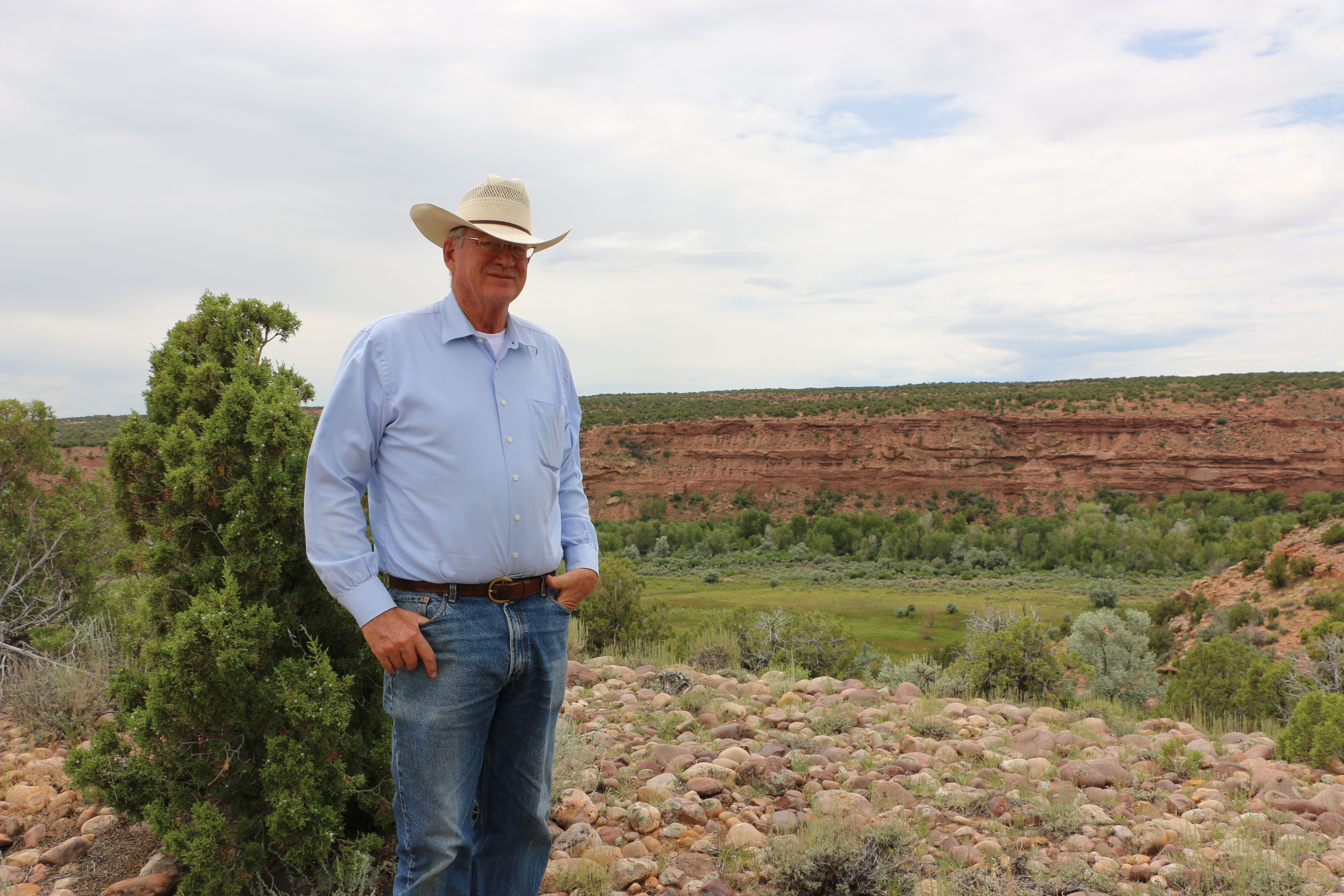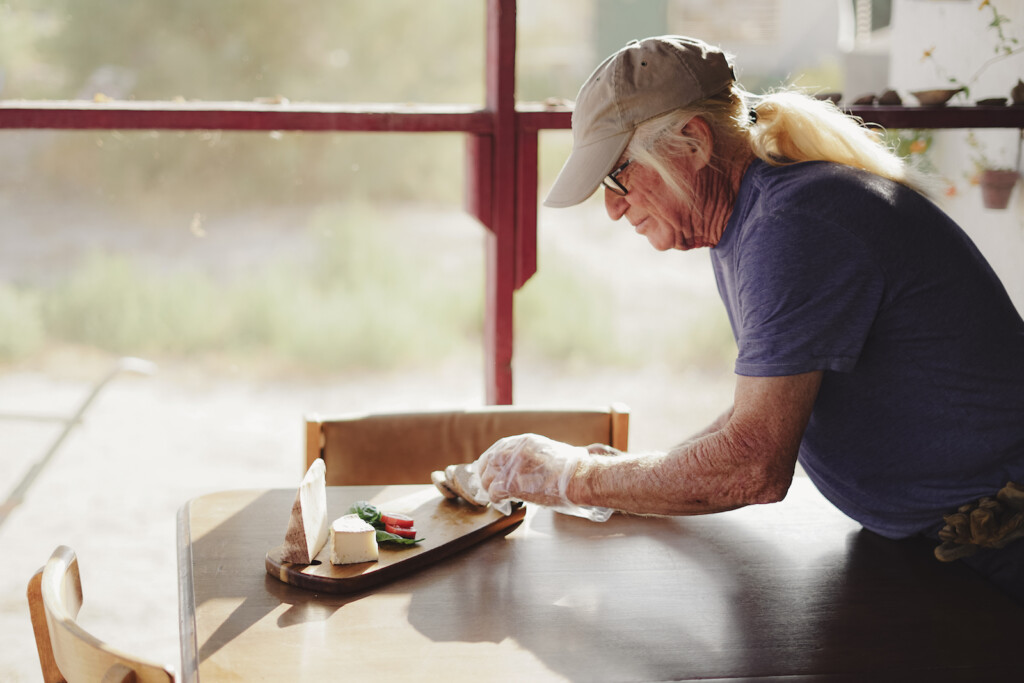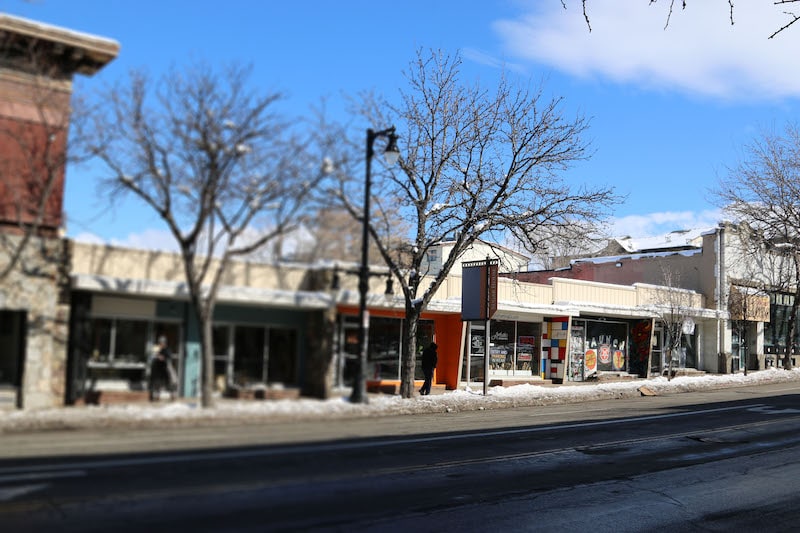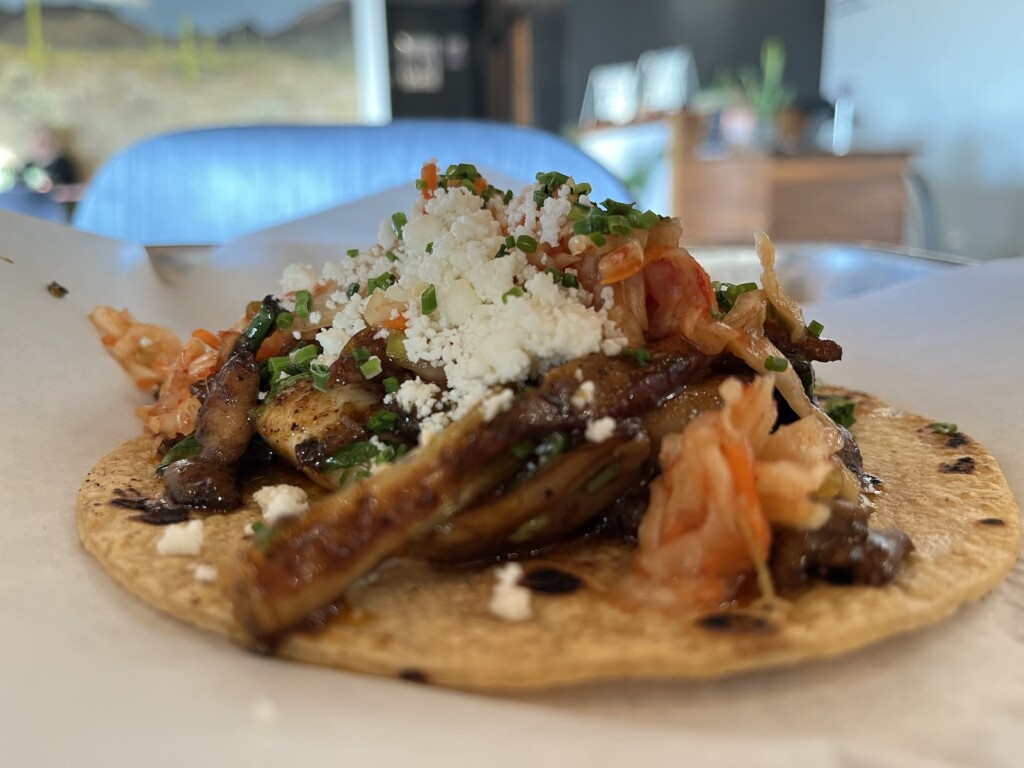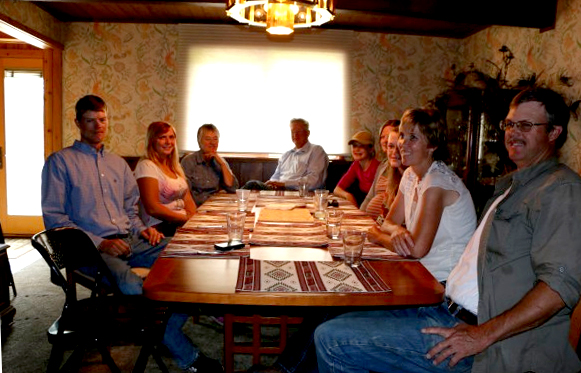 Altamont, Utah — Just a few miles from Duchesne, several new derricks are pumping crude oil into silos. Duchesne County is one of the epicenters of the fracking boom. But this year as oil prices have plunged new drilling and hiring are on hold. The boom town hasn’t gone bust, but Vernal is now suffering from air quality problems and unemployment.
Altamont, Utah — Just a few miles from Duchesne, several new derricks are pumping crude oil into silos. Duchesne County is one of the epicenters of the fracking boom. But this year as oil prices have plunged new drilling and hiring are on hold. The boom town hasn’t gone bust, but Vernal is now suffering from air quality problems and unemployment.
The fracking boom in eastern Utah represents one small part of the greater problem of rural Utah residents who are becoming increasingly dependent on mega corporations for their incomes and livelihood.
Rural Utah Dependence on Corporations
Examining the problem in terms of farming, it becomes evident that modern Utah family farms and ranches have increasingly become obligated to corporate-dominated agribusiness. Products are produced within the construct of the large-scale industry paradigm, and farm and ranch operations are influenced by corporate industry standards. Grains are grown using GMO seeds, chemical fertilizers and insecticides. Growth hormones and antibiotics are used in producing beef and poultry.
Most of the products they sell (grains, beef, and poultry) are sold to middle agencies such as Cargill and Monsanto and Tyson Foods. Farmers’ incomes become subject to the ups and downs of prices and ever shrinking commodity margins. The result: the smallest farms can’t make a living and those who remain must live by the mantra “Grow bigger or die.”
But there’s one innovative family cattle ranch in Altamont, Utah that is bucking the corporate reliance trend.
Canyon Meadows Ranch is a 2 hour plus drive south and east of Salt Lake City. It’s a third-generation operation that sells directly to consumers and uses alternate cattle-raising methods that don’t require artificial growth hormones or pesticides. And, they are one of the largest producers in the area.
“Canyon Meadows Ranch” sounds like an idyllic setting for grass-fed beef operation. Driving the main highway it’s hard to imagine any meadows among the desert and rock I see along the highway in Duchesne County. But approaching the ranch I can see green pastures lined with an almost invisible single strand of white electric fence.
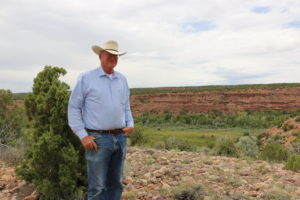
The Myrin family greets me at the door. Alarik and Beth have two sons and five daughters, and three of them are here. Deborah, Nils, Rik, and Rik’s wife Staci are accompanied by three of their children. This collective is the family and labor force behind Utah’s largest grass-fed beef operation (about 1700 irrigated acres plus pasture and rangeland with 550 cattle). They invite me to join them for a lunch of burgers, potato salad and fresh homemade cherry pie. The beef, pickles and pie cherries are compliments of the farm.
The Myrins are an educated family. Alarik earned a master’s degree in animal production and economics from Utah State University. His sons, Rik and Nils also have also earned business degrees. Daughter Deborah studied range science at Utah State. And sister-in-law, Staci, earned a degree in Veterinary Technology. Its clear that each person brings a unique skill set to the table.
Are Cows a Solution for Land Preservation?
We discuss land conservation and preservation. Should we leave vast amounts of land undisturbed, as most environmental groups advocate? Or should we allow land use that includes conventional farming and ranching that includes GMOs, fertilizers and massive amounts of wast byproduct? The Myrins share a viable middle option, one that is gaining traction in the West. They say Properly managed cattle can be used to improve rangelands and pasturelands.
Using cattle to improve ecology is a concept that exemplifies the “radical center,” says Alarik. A radical center approach to a problem or issue focuses on realism and pragmatism, not idealism emotion or politics. In the 21st century, land use debates typically are polarized by opposite-spectrum interest groups. Discussions are divisive, and resolutions difficult to achieve. The Myrins adhere to an approach which attempts to rise above politics and special interests.
Courtney White, formerly with the Sierra Club, “dropped out of the conflict industry.” White was tired of environmental conservation politics and fighting. He realized that many ranchers and environmentalists seek the same goal of wanting what is best for both the environment and the animals. In 1997, he cofounded the Quivira Coalition, whose mission is “to build resilience by fostering ecological, economic and social health on western landscapes through education, innovation, collaboration and progressive public and private land stewardship.” White notes that “having both sides to work together is much more powerful than fighting.”
Alarik’s daughter, Deborah, worked for Quivira for a few years, with the goal of letting the science speak for itself. One claim that she studied is that proper management of cattle grazing can preserve natural springs and improve soil. Rik explains how.
“I think it is more of a soil surface cover issue. If you have grass that is fallow, and if you don’t get enough disturbance or cover, you get bare dirt and nothing will grow. And if you have a rain storm the water will start eroding the soil because you have more surface runoff.” “But,” he continues, “if you have cattle or buffalo, or any animal that will break the stems and trample the dirt but leave seeds and stems in the dirt and stir stuff up, then instead of having bare dirt in between plants, you have some stems and some seeds and it only takes a little bit of litter over the bare dirt to make a drastic difference on how much of the rainfall soaks in.”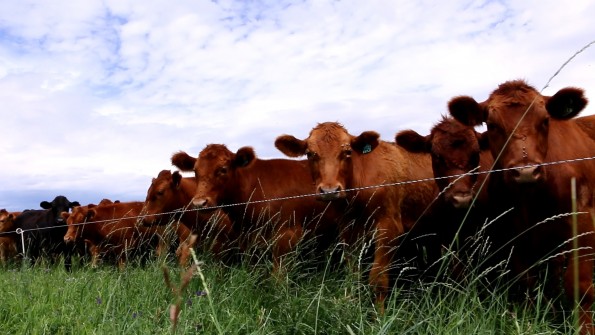
Canyon Meadows Ranch Tour
We climb into Deborah’s Jeep Liberty for a tour of the ranch. Deborah is seven months pregnant, “I can handle the bumpy road as long as I can drive.” Almost right away we see a huge owl fly in front of us. “There is a family living here,” says Alarik. No spraying occurs on this ranch, which promotes wildlife. We drive to the edge of the plateau: a vast meadow rests in the canyon, much of it is wooded, with Cottonwood trees. I wonder where the cattle are and I learn that the cattle don’t spend more than a few days in any one pasture. Cattle are managed using portable electric fencing. They rotate the cattle, and the previous pasture is allowed at least 30-days “rest.” A portion of the herd also spends the summer and fall in the National forest using their grazing permits.
The cattle are managed so the time spent in each “pasture area,” an 8 acre area, causes them to be less selective than if they had an entire massive range where they could pick and choose the grasses that taste best. This ensures an even distribution of grasses trampled and eaten. This method also promotes longer root growth.
Long and lush native grasses are mixed with alfalfa and red clover. “The clover actually produces more nitrogen than what it needs, so it provides the nitrogen that the other grasses need,” Rik says. “Healthy soil is one of the best ways to sequester carbon. The healthier we can make our soil, the more carbon it stores away. This idea is supported by the grass-fed movement which has a lot to do with building soil as a process which is best done without tilling the soil, and instead using animals to disturb the soil and add their natural fertilizer.” The goal at Canyon Meadows Ranch is to “allow the cattle to spread the fertilizer,” Alarik says “And have the cows control the weeds and promote the growth of the best grasses.” adds Nils.
Intensive Range Management
As we approach their eight-acre paddock in the jeep, the cows are interested and even excited to see us. Staci, who studied Veterinary Technology, says they practice “handling techniques” with the cattle, which make them more friendly toward humans. “These are red Angus, cows,” she says. Most grass-fed cattle require around two years of growth before they are butchered. But these cows are yearlings and they will all be ready for butchering in the fall. They attribute this to both the breed and the nutritious grasses they feast on each day.
Staci says, “Some people say to us, ‘How can you treat your animals like that.’ I tell them, our cows have a happier life than most of the humans on this earth.” Alarik adds, “We sometimes have vegetarians come to our booth at the farmers market to buy our beef, because they know that we produce our product in a humane manner.”
While the majority of beef sold in the United States spends most of its life in pastures eating grass, the last 90 days of their life they spend in feedlots where they gain 35% of their body mass eating a corn-based silage. Cattle feeds are often supplemented with steroids to promote additional growth, and antibiotics to counteract the effects of possible stomach e-coli—which happens much more frequently in cattle which are fed corn. Cow’s stomachs and rumen are designed to eat and digest grass. Finally, many cattle are give an additional drug which makes the meat more lean.
My last stop of the tour is where Rik has been working with his teenage daughters on collecting grass into rows. “In school they learn all of their subjects, but here they can learn practical applications of what they learn.” The girls are able to operate the machinery on the ranch. They use some of the tractors to mow, rack and bail their hay—then use a bailer attachment to produce bales. I ride with Rik atop the tractor and watch the bailer suck up grass and spit out massive 1200 pound bales nicely knotted and in perfect compact rectangular cubes. It’s the need for expensive equipment like this that makes it so difficult for average families to get into the ranching business.
However, the Myrins’ use this equipment far less than most farms, Rik says his new tractor will likely last over twenty years,and some grass cattle ranchers in the east are able to get by without using any heavy industrial equipment.
On most ranches hay is usually mowed and harvested three times in one season, and planted by using heavy equipment to till the soil and plant the seeds. At Canyon Meadows much of this heavy equipment work is not required because the cattle take a much greater part in spreading the fertilizer and preparing the soil. This saves a huge amount of diesel fuel and machine hours.
Rather than harvest their hay three times, they let the cows come and harvest in the spring and while doing so “spread the fertilizer” (manure). The second harvest of hay they cut and bail with their machines, for winter supplement. Then for the third harvest in the fall they leave the hay in rows into the winter months. They’ve found the cows will forage and find the hay even under deep snow. Rik says, “We have found that rather than penning up the cattle into confined areas, if we instead allow them to stay in the fields and find their feed, they are healthier and happier.” This was a discovery they stumbled upon, and later found a grass farmer in Canada who was already using this practice.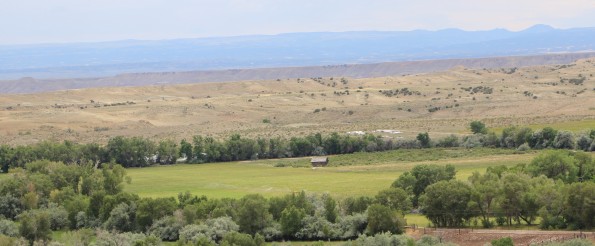
Farmers Markets And Direct Marketing
To tell the story of their cattle and the consistent high quality has been a huge benefit to Canyon Meadows since they started selling at the farmers markets along the Wasatch Front.
Myrin’s ranch began experimenting with direct marketing just six years ago. Before returning to Alarik’s father’s ranch the family owned a ranch in Colorado, “We experimented with grass-fed cattle around 20 years ago, and we put an ad in Boulder’s local newspaper and didn’t get a single order,” says Rik.
At farmers markets, where they offer fresh and frozen vacuum sealed products, they continue to note the greater demand for the grass-fed versus grain fed beef. “We had one doctor who bought our beef, and he used to tell us, [pointing to the grass-fed beef] ‘This stuff is as good as wild salmon, and this stuff [grain-fed beef] will kill you,’” Alarik says. Canyon Meadows Ranch currently sells the majority of their beef to customers at the SLC farmers market, and supplies a few Salt Lake City restaurants, including Salt Lake Pizza and Pasta, Provisions and Rye.
Canyon Meadows demonstrates how educated hard-working families can produce green lush pastures that support healthy, contented animals. Thanks to the growth of the farmers markets and consumer awareness, the growing future of rural Utah can be an alternative than the current subservience to corporate America.
Canyon Meadows beef can by purchased at farmers markets and stores. For all the locations of where their beef can be purchased visit them at CMRbeer.com

